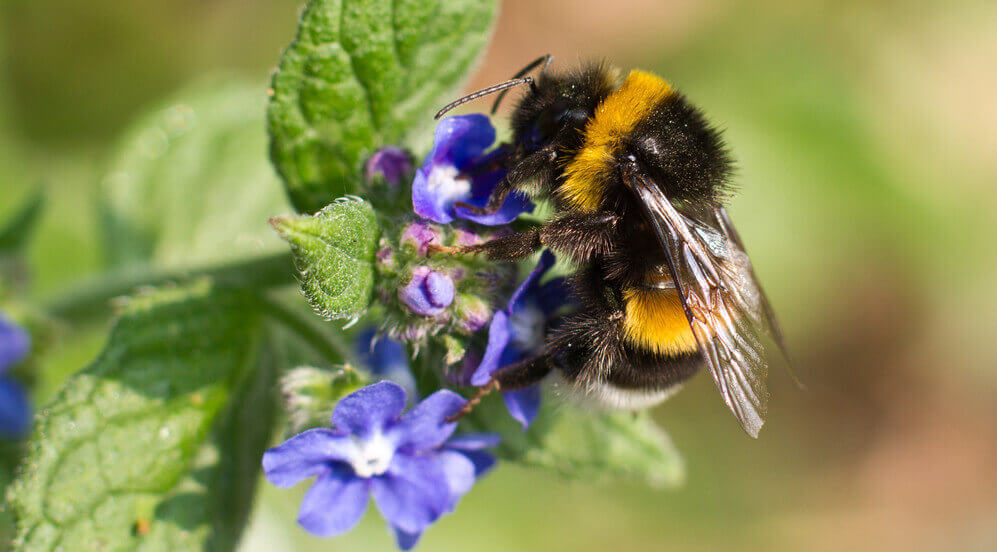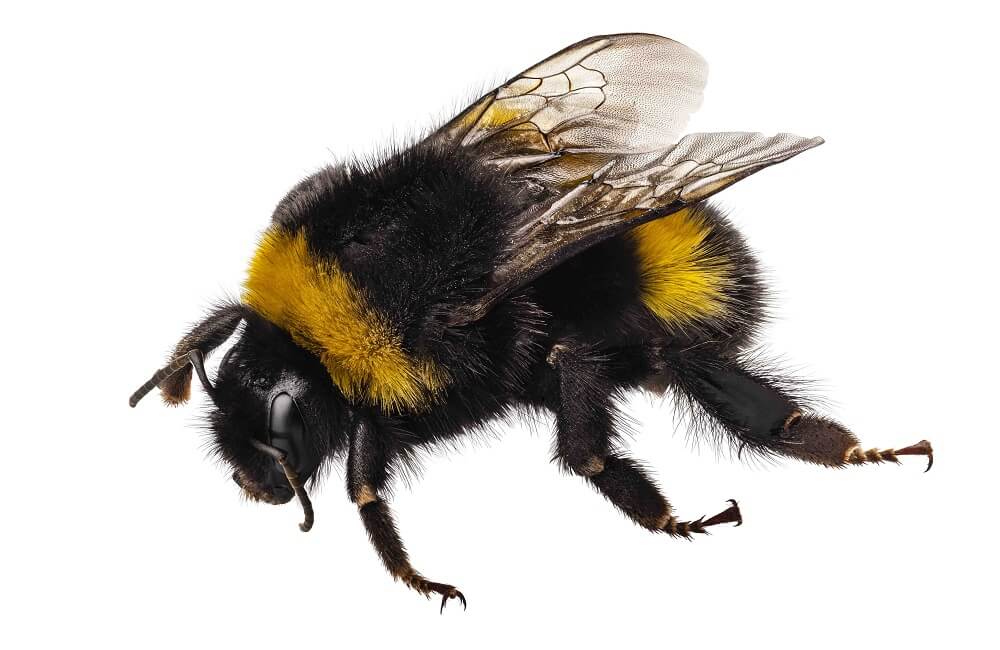
A 250+ species membered family in the genus Bombus, bumblebee’s life does not just revolve around humming and buzzing around or extracting nectar. They also help flowers scatter their seeds for effective reproduction. But do you know some species of bumblebees are on the brink of extinction? So which species of bumblebees are endangered? And most importantly, why are bumblebees endangered? We’ll find all that and more in this article.
What Are Bumblebees?
Tiny fuzzy and, linty pollinators, bumblebees are indeed bliss to the environment. Although they have short, heavyset wings and torso bigger than a common bee, they do not produce as much honey as the latter. Unlike others, these tiny ones are not just concerned about their well-being. According to the sources, nearly two-thirds of the crops and harvests worldwide depend upon pollination between male and female gametes of a flower. And these tiny creatures are very good at it.
Knowing no boundaries, having no fear of heights, and suffering no anxieties of flight, these invertebrates have flown up to a height up to 5,500 km, which is equal to that of Mount Kilimanjaro, the tallest mountain of Africa.
According to the Integrated Taxonomic Information System (ITIS), the largest of these, the Bombus dahlbomii can grow up to 3-4 times longer than that of an American bumblebee. In the study published in 2005 by the National Academy of Sciences, it was found that these bees can flap their wings back and forth rather up and down. “The wing sweeping is a bit like that of the partial spin of a “somewhat crappy helicopter propeller.”
Where Do Bumblebees Live?
The bumblebees don’t have a specific location and are found all over the world. The largest one till date has been found in Argentina and Chile. They stay close to the ground, mainly under the pile of wood/compost piles.
Are Bumblebees Endangered?

The Rusty-patched bumblebee (found in the United States) was the first bumblebee to be declared as endangered. According to a report made by the U.S Fish and Wildlife Service in the month of January 2017, the rusty-patched bumblebee (Bombus affinis), which was once very common between us, is “now balancing precariously on the brink of extinction”. Surveys have confirmed that nearly 87% population of these tiny hurricanes has declined within a span of 2 decades.
Also, in September, seven species of Hawaiian bees, including the yellow-faced bee (Hylaeus anthracium), received protection under the Endangered Species Act.
Why Are Bumblebees Endangered?
Let us closely examine the reasons due to which bumblebees have reached this critical stage of getting endangered. A few of them can be listed as:
1. Loss Of Habitat:
The researchers found that there was a dramatic bereavement in the southern parts of their ranges. It has been henceforth observed that the climatic changes have been compelling the southern edge residing bees to move towards the north ranges. These random changes in their habitats affected their lifestyles in an unfavorable manner.
2. Diseases:
A fungal gut parasite called Nosema bombi is believed to reduce the life span and disrupt mating success and survival of the bumblebees. Circumstantial proof suggests that fungus may have come to the wild bee from commercial associations used for tomato allogamy in the 1990s. Several other causes threaten the existence of these bees, such as exposure to agrochemicals, loss of preferred plants, etc. which tend to make the effects of diseases worse.
3. Unfavorable Climate Conditions:
The bumblebees have evolved in balmy, mild, temperate climates, so when the temperature rises up near the equatorial region, it gets really warm and needless to say difficult for the bees to survive. “They may not have the ability to adapt to changing the climate in the way that a few organisms who have a tropical evolutionary history are able to adapt,” quoted Leif Richardson, a postdoctoral research fellow at the University of Vermont’s Gund Institute for Ecological Economics.
The shrinkage of topographical ranges could put major pressure on the already vulnerable bumblebees, driving them closer to the threshold of extermination. Sir Richardson has also added, “Shifting ranges could be a problem for both wild plants and crops at the bees’ southernmost limits if the future to pollinate them. There is unquestionably a threat to humanoid agronomy.” All these statements made by surveyors and the data analysts make us realize the dangers faced by bumblebees and what could actually happen if we don’t work on it right now.
4. Inbreeding:
In the recently updated Red List of Threatened Species, by the International Union for Conservation of Nature and Natural Resources, the Yellow-banded bumblebee, Bombus terricola was listed as vulnerable. “This meticulous bumblebee is down to about 10% of its former numbers. It used to be one of our most common bumblebees in Southern Ontario. When we created the genome, we looked for signs of inbreeding, and unfortunately, that’s what we found. Bumblebees in Southern Ontario and mid-northern Quebec are becoming more inbred,” told the York University biology researcher Clement Kent, who led the research.
To put things to your perspective, bees are becoming more inbred and it’s leading to the vast decline in their population. With inbred bees, males can become infertile, and even after mating with the queen, they won’t be able to produce any offspring. In fact, there are high chances of producing sterile males rather than workers.
We think these reasons are enough to open your eyes to the plight of bumblebees. As of now, just a few species of bumblebees are endangered, but if we don’t work on it now, many more species will be under threat. So it’s high time we start working on conserving the bumblebees.
If you have any queries regarding why are bumblebees endangered, leave us a comment below.
